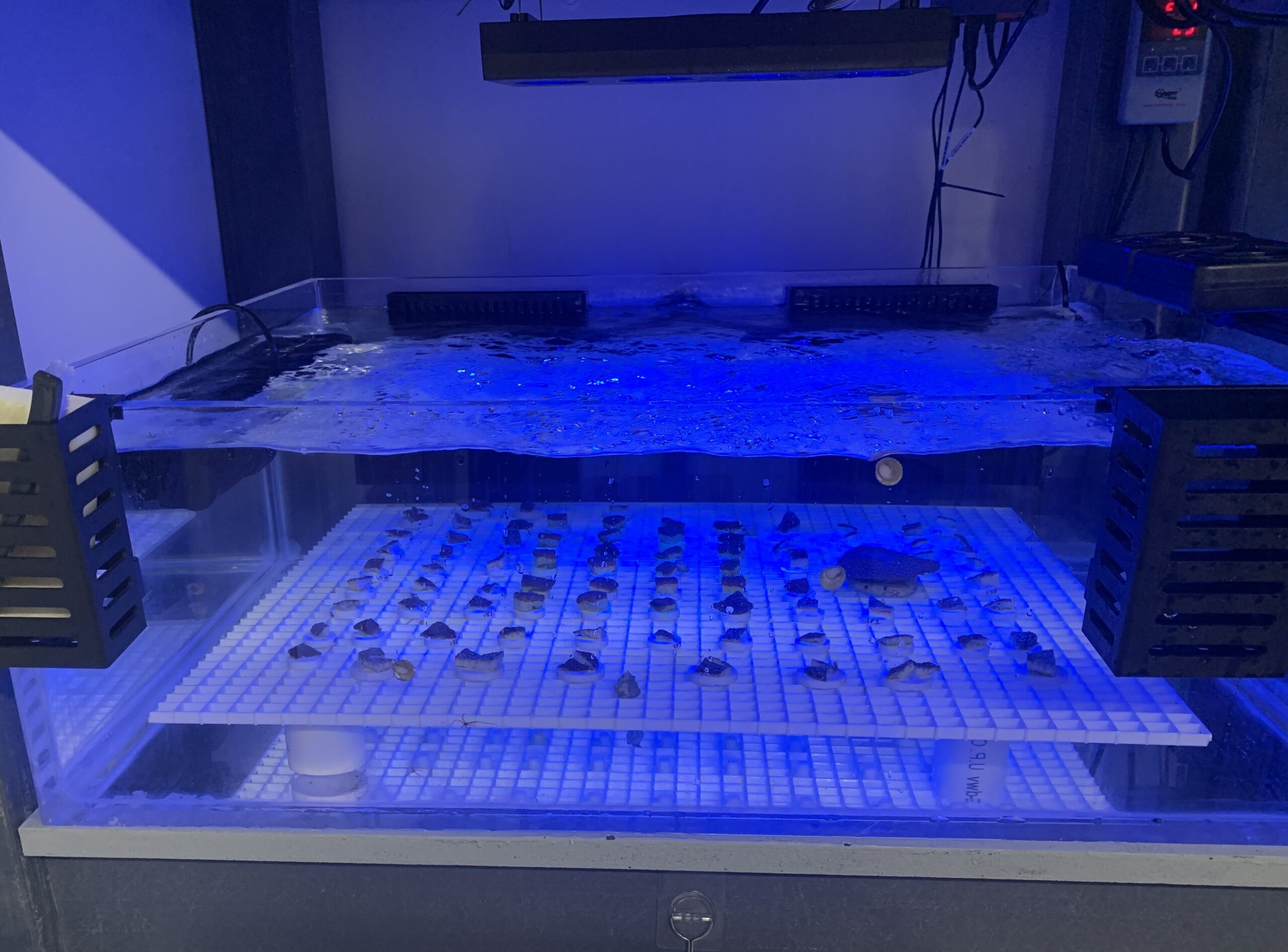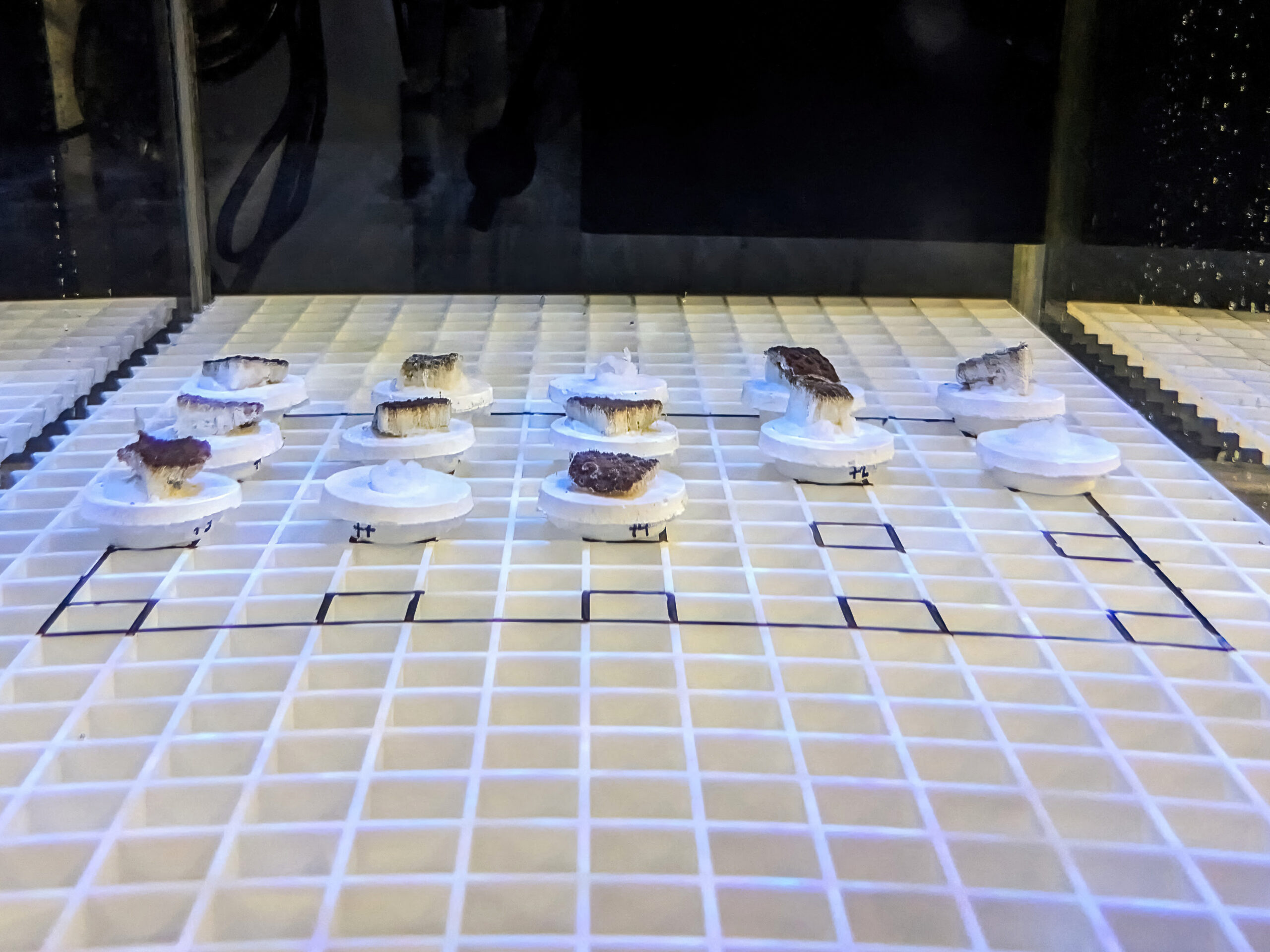
With its current price tag under $1 million, the artificial reef being designed for the Virgin Islands may be the cheapest bit of infrastructure the islands will ever see – as well as the one with the greatest longevity and possibly the most far-reaching impact. If it works.
A collaboration between marine experts from the University of the Virgin Islands and the Division of Fish and Wildlife in the territory, along with researchers at Woods Hole Oceanographic Institution in Massachusetts, the pilot project was announced last month. The structure for the reef is slated to go into coastal waters off of St. Thomas in July.
Hopes are high that it will prove a boon to the territory in multiple ways – as a recreational attraction, as a habitat for fish, and, eventually, as a natural protective barrier for the island, mitigating the impact of future storms.
The decline of corals due to bleaching events, pathogens such as Stoney Coral Tissue Loss Disease, and other stresses has driven research into ways to preserve and enhance coral reefs.
In recent decades, there have been many attempts at “creating” reefs in many places, including the Virgin Islands, by recycling existing products.
But this is a very different approach. It’s not a shipwreck being towed to a location suitable for scuba diving. Or a proposal to toss evergreens discarded after Christmas into the ocean in hopes of creating a fish habitat. Or a pseudo eco-scheme to dispose of old tires.
“It’s not just an excuse for dumping big objects in the ocean,” said UVI Research Professor Marilyn Brandt, the project manager.
Rather, it’s an 18-foot by 12-foot structure designed and built for the specific purpose of acting as a starter home for corals that are being grown in labs, with the intention that over time, it will attract more coral growth and eventually become indiscernible from the natural coral reefs that dot the ocean.
Sennai Habtes, V.I. Fisheries Bureau chief, said there is a somewhat similar artificial reef in Florida but few others exist. For the territory, this is a first.
The structure is being built on St. Thomas from locally sourced natural materials, Brandt said. Its natural chemicals will help stimulate coral growth. A modular design, it will be submerged in parts and assembled underwater. Then, live, lab-grown coral pieces will be attached to it.

Officials are not saying yet exactly where it will be placed because of what Brandt said is a potential safety issue. “If things destabilize, we may have to take it out.”
However, that’s only a precaution. The researchers expect the structure to become an underwater attraction. “We certainly want people to use it,” she said.
The original idea for the undertaking – which came from the division of Fish and Wildlife at the V.I. Department of Planning and Natural Resources – was to enhance the territory’s small-scale fishing industry by increasing the supply of fish, Brandt said.
“Fish are generally attracted to structure,” she said, so it shouldn’t take long for them to be drawn to the artificial reef. It will be shaped to mimic a petroglyph, reminiscent of the ancient rock carvings found on St. John, which means it will have numerous niches and cavities that offer fish a convenient hiding place from predators. As it ages, it will also provide a food source for some marine life.
In the meantime, it will also be a research tool. Part of the project, Brandt said, is to learn how and when fish use the structure as well as to monitor the growth of reef life.
The design, construction and installation of the artificial reef is being funded by a $763,784 federal disaster grant prompted by the 2017 hurricanes. The intent is to help protect against damage of undersea resources from future storms as they become more intense because of global warming.
If all goes as planned, a future St. Thomas will have enhanced protection because the project has grown into a large coral reef.
But that day is a ways off.
“Coral is a slow-growing organism,” Habtes said. It will be decades before the project looks like a reef. It may eventually grow much bigger than the original artificial structure, but “in our lifetime,” it’s not likely to get much larger.


